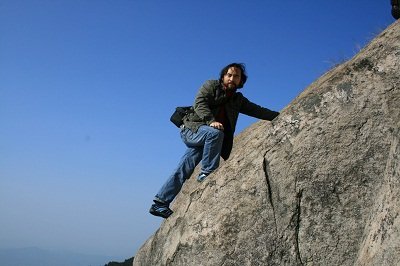
Chakrasambhava(3)
Chakrasambhava is the root yidam of the “Five Golden Dharma of Niguma”, representing the body, language and mind of all Buddha, and is the integration and reflection of the merits of all Buddha of the past, present and future. Therefore, more ink has been spent on him. It must be emphasised that all dharma instruments and dharma items in the images of the Five Great Vajra are all indicative and symbolic. For example the Buddha father and Buddha mother symbolize skilfulness and wisdom, skilfulness is the great joy co-living, and wisdom is the wisdom which masters the empty nature of all dharma. Vajra Bun-the tenth Class states “All Bodhisattva asked Buddha: your Honour, why call it Yogi Tantra? Vajra Dhara said: Prajna aids skilfulness, therefore it is called yogin, great joy and compassion unite, turning into truth, therefore it is called yogin tantra.”
In the visualization of the Creation Stage of the “Five Golden Dharma of Niguma”, there is an honourable Chakrasambhava in the centre of the navel chakra, which is same as the self manifesting Chakrasambhava (Buddha father and Buddha mother), there is a slightly smaller Chakrasambhava in each of 64 petals, all of which face the central chief yidam. Chakrasambhava is what all Buddha of the past, present and future depend on, and is the integrative representative of the merits of all Buddha, and therefore is called the general collective wheel.
From the above, readers can see the symbolism characteristic of Tibetan Buddhism. Some lineages debase Tibetan Buddhism, or call it idol worship, or because they do not understand the symbolic meaning in the Buddha image say things that are completely wrong. However, they do not know that almost all content in the images of Buddha in Tibetan Buddhism are symbolisms. Their meanings all correspond to Buddhist scriptures and all use “limited experiences” to express “the religious faith that is the ultimate concern”.
Tillich, a western scholar of religion, said “Faith does not have other ways to express itself. The language of faith is the language of symbolism.” “Whether in quality or strength, the power of symbolism is far greater than any non-symbolic language. Therefore, it should not be said that the symbols used to express faith are ‘only a symbol’, but instead say that they are ‘more than only a symbol’. Only if this point is known first is it possible to understand the different kinds of religious symbolism.” “Faith is not belief in these kinds of stories, but acceptance of those symbols that use holy conduct to express our ultimate care.”
Landeer, a professor of Columbia University in America believes “What religious symbolism uncovers is not ‘descriptive knowledge’, but appears more like ‘direct recognition’ or very similar to commonly mentioned ‘insight’ or ‘foresight’. Therefore, religious symbolism can not ‘tell’ people any “things that can be attested” but make us ‘see’ certain aspects of the world humanity experiences. This special aspect and its experience can be called ‘the glorious order’.”


